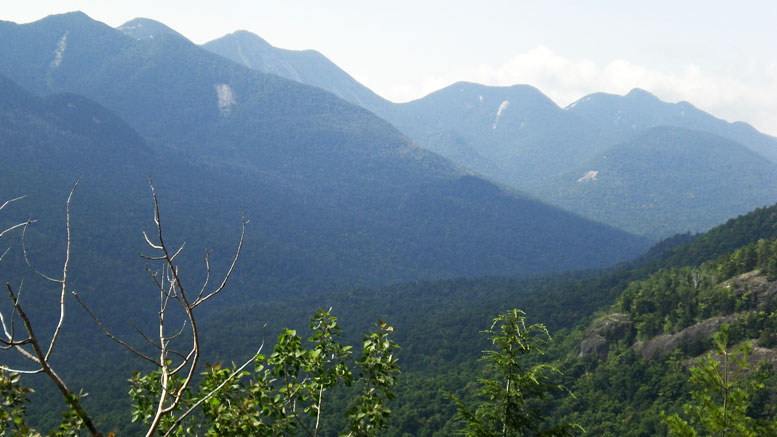By Jerry Delaney
An environmental advocacy group, Adirondack Wild, recently accused Gov. Andrew Cuomo, the Adirondack Park Agency and the state Department of Environmental Conservation of unjustly putting the interests of the Adirondack Park economy above its environmental health.
What’s really happening — and should be celebrated by those who truly care about the park’s future — is a move on the part of the Cuomo administration, the APA, DEC and the park’s more reasonable and respected environmental groups to finally establish the balance of economic and environmental interests that was envisioned at the park’s inception.
The Adirondack Park is a fascinating social experiment – a six-million-acre expanse of public and private lands governed by some of the most restrictive land use regulations in the country, but also home to approximately 130,000 people who must reconcile those restrictions with their need to earn a living.
For many years, the balance between the environment and the economy has been woefully out of whack when it comes to state policy in the Adirondacks — to the detriment of the economy and residents.
Over the past four decades the amount of the park that is owned outright by New York state or controlled by state conservation easement has grown from 2.3 million acres to 3.6 million acres —meaning nearly 60 percent f today’s park is effectively off-limits to any form of development, and to many forms of economic and recreational activity. Couple that with restrictive state regulations on how private lands can be used, and the challenge of sustaining local economies and populations is overwhelming.
Local government leaders have, for many years, called for the “sensible balance between the needs for preservation and development within our treasured Adirondack Park,” that was so eloquently envisioned by Gov. Nelson Rockefeller in 1973. We have not asked to run roughshod over our land. This is our home, and we understand better than anyone how inexplicably linked our economic prospects are to a healthy, well-protected natural environment. What we have asked for is the ability to use the land that is still available to us in a sustainable way for economic growth — whether it’s producing useful products, or creating recreational opportunities, natural resource-based attractions or responsibly planned and constructed homes and hospitality businesses where people can live or stay while enjoying the natural splendor our region offers.
Finally, we are beginning to see progress. Under Cuomo, we have seen a much more fair, reasonable and balanced approach to Adirondack issues. The state is helping us strengthen our economy, without jeopardizing the environmental health or natural resources upon which that economy is built.
After more than 10 years of intense environmental review and exhaustive public debate, the proposed four-season destination Adirondack Club & Resort in Tupper Lake has received state approval to proceed. The project is designed to bring 500 new year-round private-sector jobs to the region and generate more than $11 million in new tax revenue. Development will occur on just 522 of the property’s nearly 6,400 acres —far less than allowed by state regulations — and more than 5,000 acres will be set aside as open space. This is balance at its best.
Just outside Lake George village, approval has been given for a zip line attraction on privately owned French Mountain. The zip line will comply with strict environmental regulations, and the owner has pledged to minimize the number of trees that will be removed to accommodate the attraction. His goal is to give people an unparalleled “birds’-eye” view of the lake and its surrounding environs by allowing them to soar above the forested landscape and gain a new appreciation for the natural beauty the Adirondacks have to offer. This is balance at its best.
On the former Finch, Pruyn forestlands now owned by the state in the heart of the park, New York is working with local governments to identify new recreational opportunities — like improved and expanded snowmobile trails or mountain biking experiences — that take advantage of the extensive network of woods roads that were navigated for generations by logging trucks and skidders. This is balance at its best.
There’s also the state’s agreement to temporarily swap 200 acres of state Forest Preserve land next to an active mine in Essex County to the mine’s owner in return for 1,500 acres of new Forest Preserve lands. The swap will help protect 100 good-paying Adirondack jobs, and was validated as a good idea by the state’s voters who approved it on Election Day two years ago. This is balance at its best.
Some people would like to you believe that a crisis hangs over the Adirondacks because of decisions like those above. But where they see apocalypse, we see opportunity. New York state is paying attention to the people of the Adirondacks, as well as the trees and lakes and creatures. This is balance at its best.
Jerry Delaney chairman of the Adirondack Park Local Government Review Board and a councilman in the town of Saranac. The Local Government Review Board was created by the state to monitor, advise and assist the Adirondack Park Agency as the “voice of local government.”

